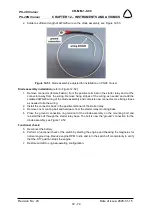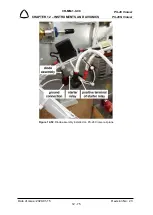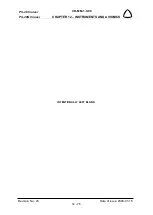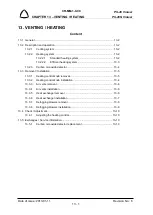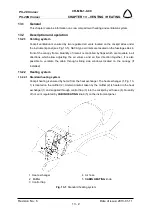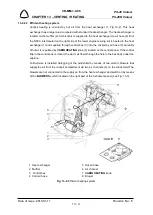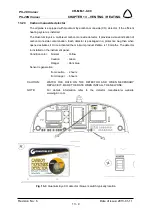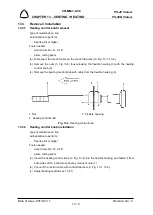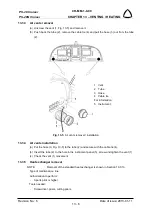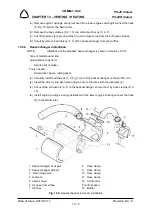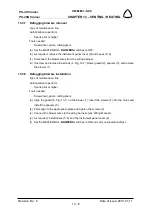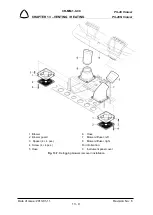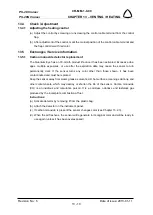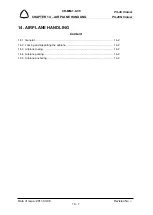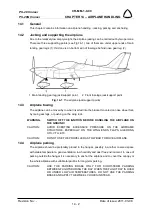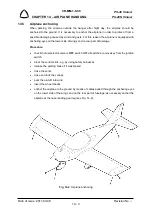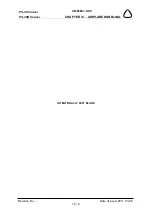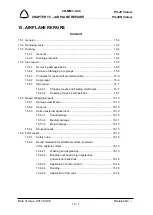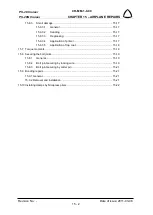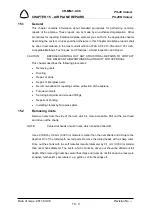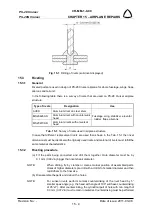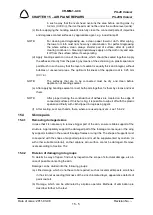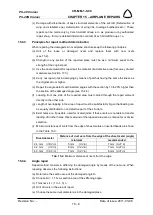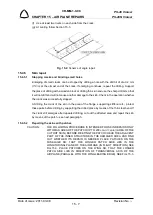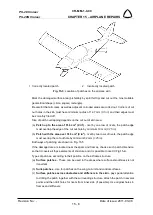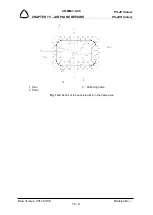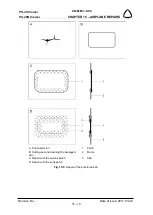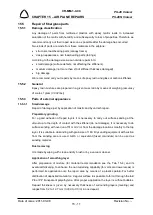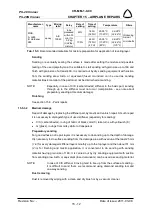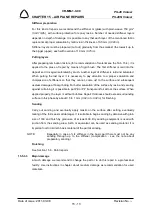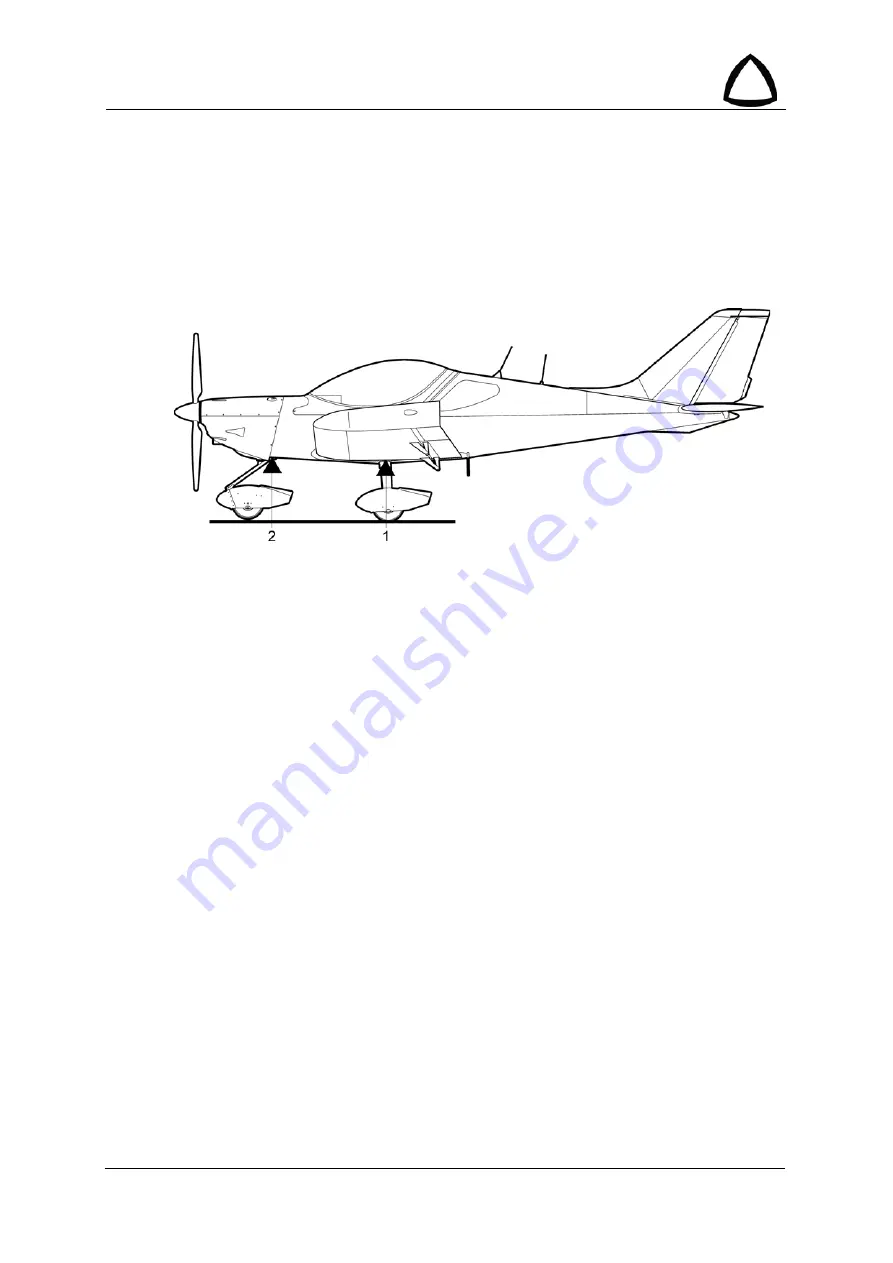
PS-28 Cruiser
PS-28N Cruiser
CR-MM-1-0-00
CHAPTER 14 – AIRPLANE HANDLING
Revision No.: -
Date of issue: 2011-03-08
14 - 2
14.1
General
This chapter contains information on airplane handling - jacking, parking and anchoring.
14.2
Jacking and supporting the airplane
Due to the relatively low empty weight, the airplane jacking can be carried out by two persons.
There are three supporting points (see Fig.14-1), two of them are under upper ends of main
landing gear legs (1); third one is on bottom skin of fuselage behind nose gear leg (2).
1 Main landing gear leg jack/support point
2 Front fuselage jack/support point
Fig. 14-1
: The airplane jack/support points
14.3
Airplane towing
The airplane can be moved by tow bar inserted into the bracket mounted on nose wheel fork,
by main gear legs, or pushing on the wing root.
WARNING:
SWITCH OFF THE IGNITION BEFORE HANDLING THE AIRPLANE ON
THE GROUND!
CAUTION:
AVOID EXERTING EXCESSIVE PRESSURE ON THE AIRFRAME
STRUCTURE, ESPECIALLY ON THE WING ENDS, FLAPS, AILERONS,
HTU, VTU, ETC.
CAUTION:
DO NOT USE THE PROPELLER AS TOW BAR TO MOVE AIRPLANE.
14.4
Airplane parking
The airplane should be preferably placed in the hangar, possibly in another covered space
with stable temperature, good ventilation, low humidity and dust free environment. In case of
parking outside the hangar it is necessary to anchor the airplane and to cover the canopy or
the whole airplane with suitable tarpaulins for long-term parking.
CAUTION:
USE THE PARKING BRAKE ONLY FOR SHORT-TERM PARKING
BETWEEN FLIGHTS DURING THE DAY. WHEN THE FLIGHT DAY IS OVER
OR UNDER LOW AIR TEMPERATURES, DO NOT USE THE PARKING
BRAKE AND APPLY THE WHEEL CHOCKS INSTEAD.

